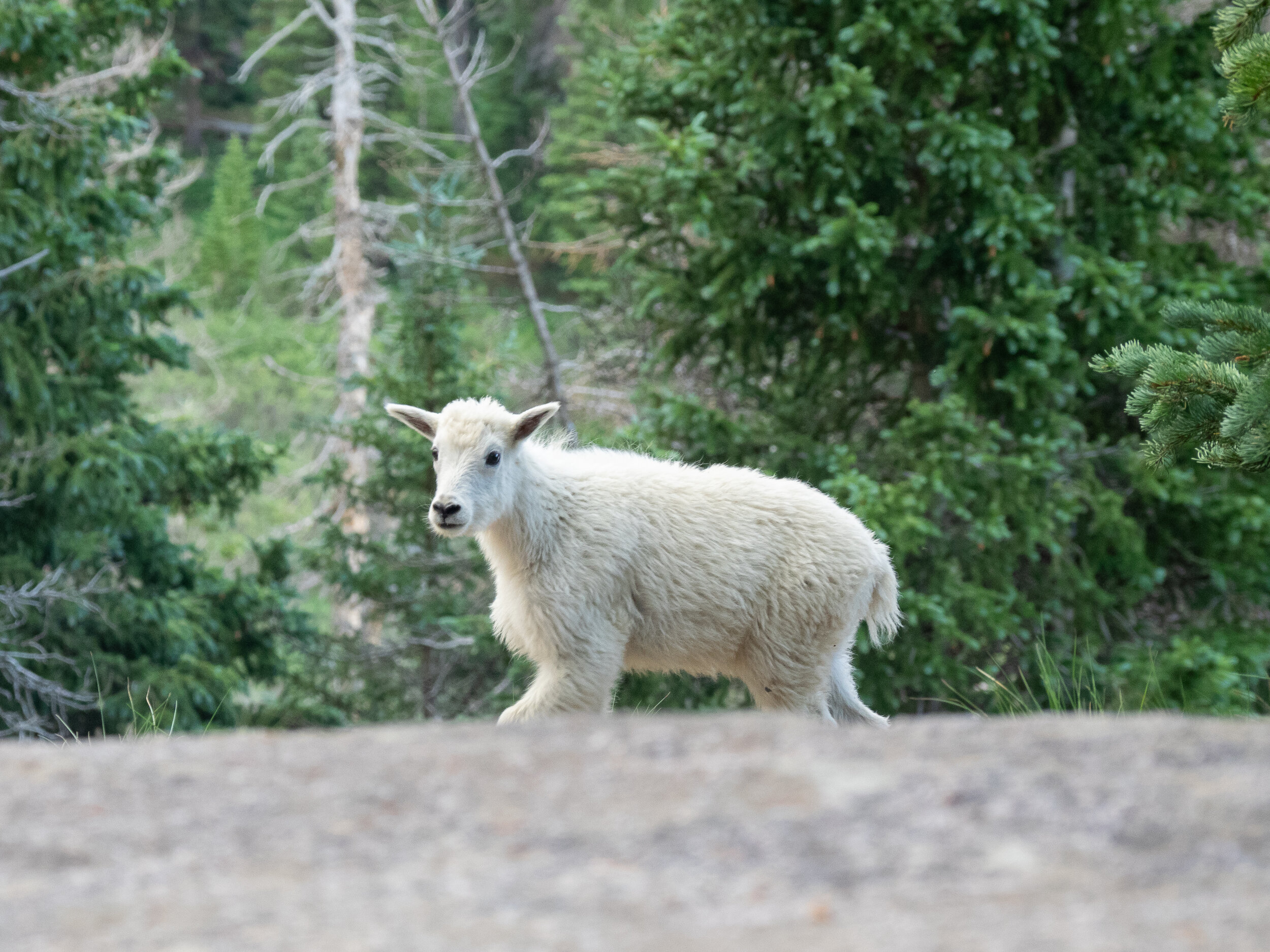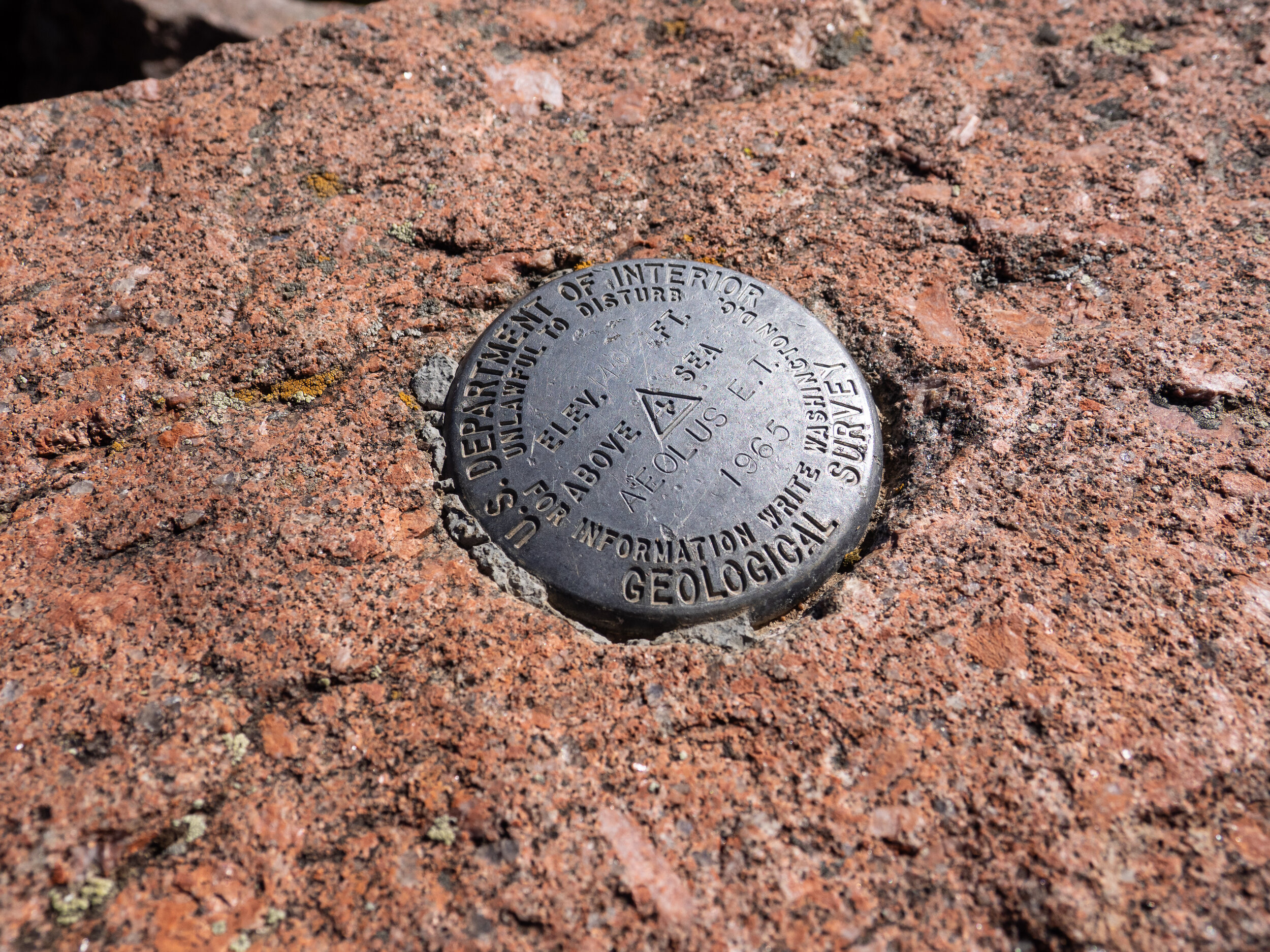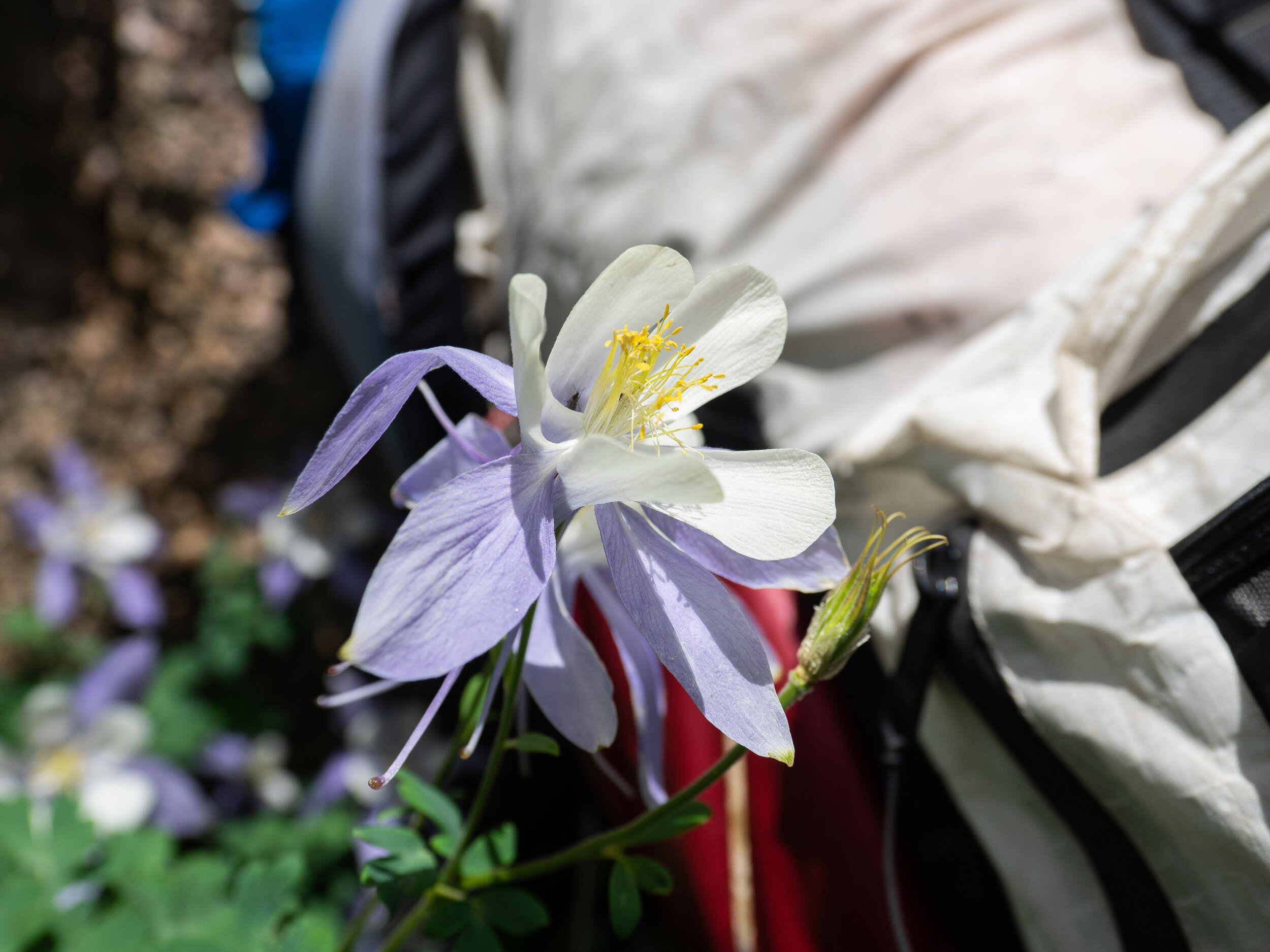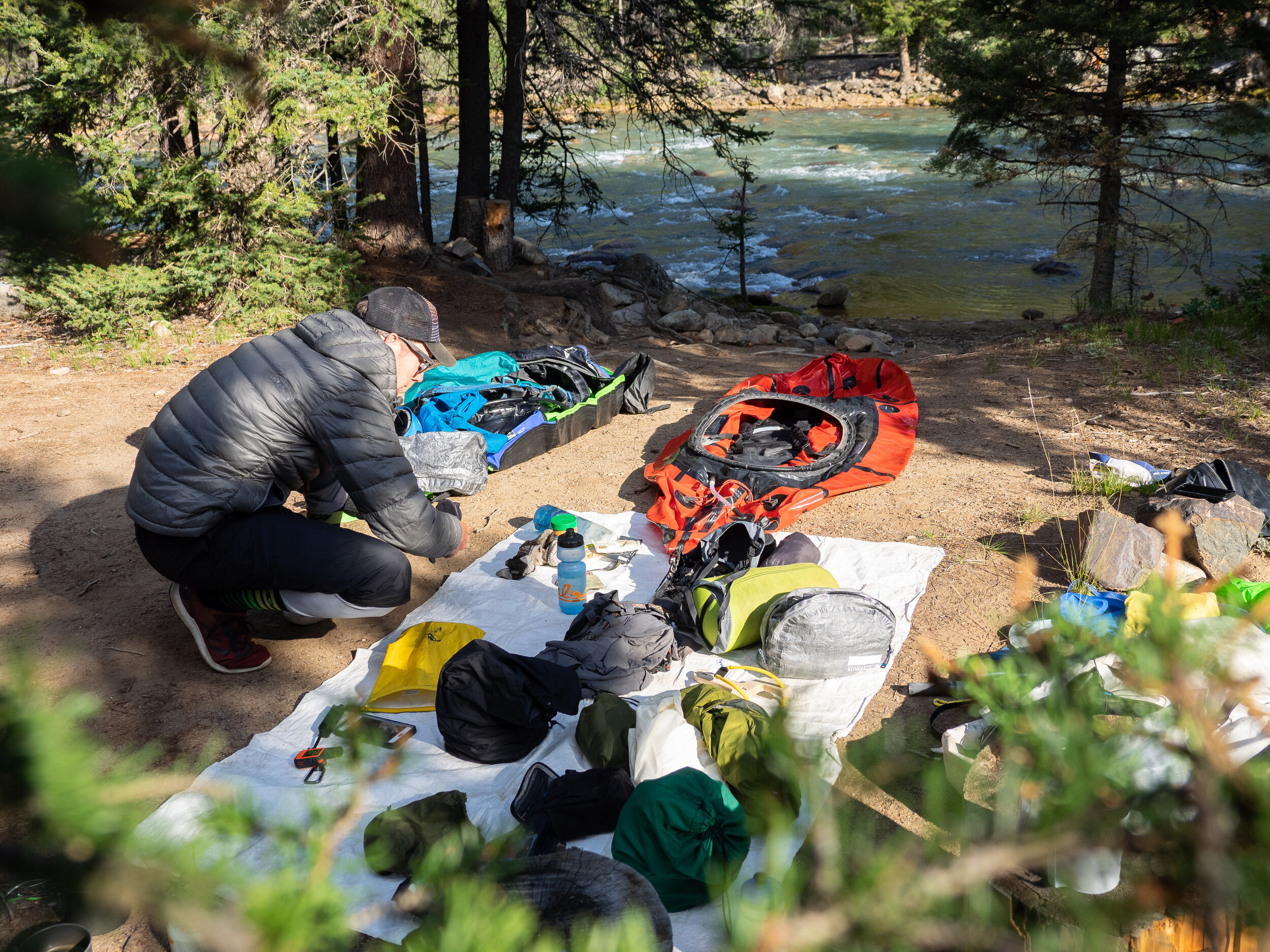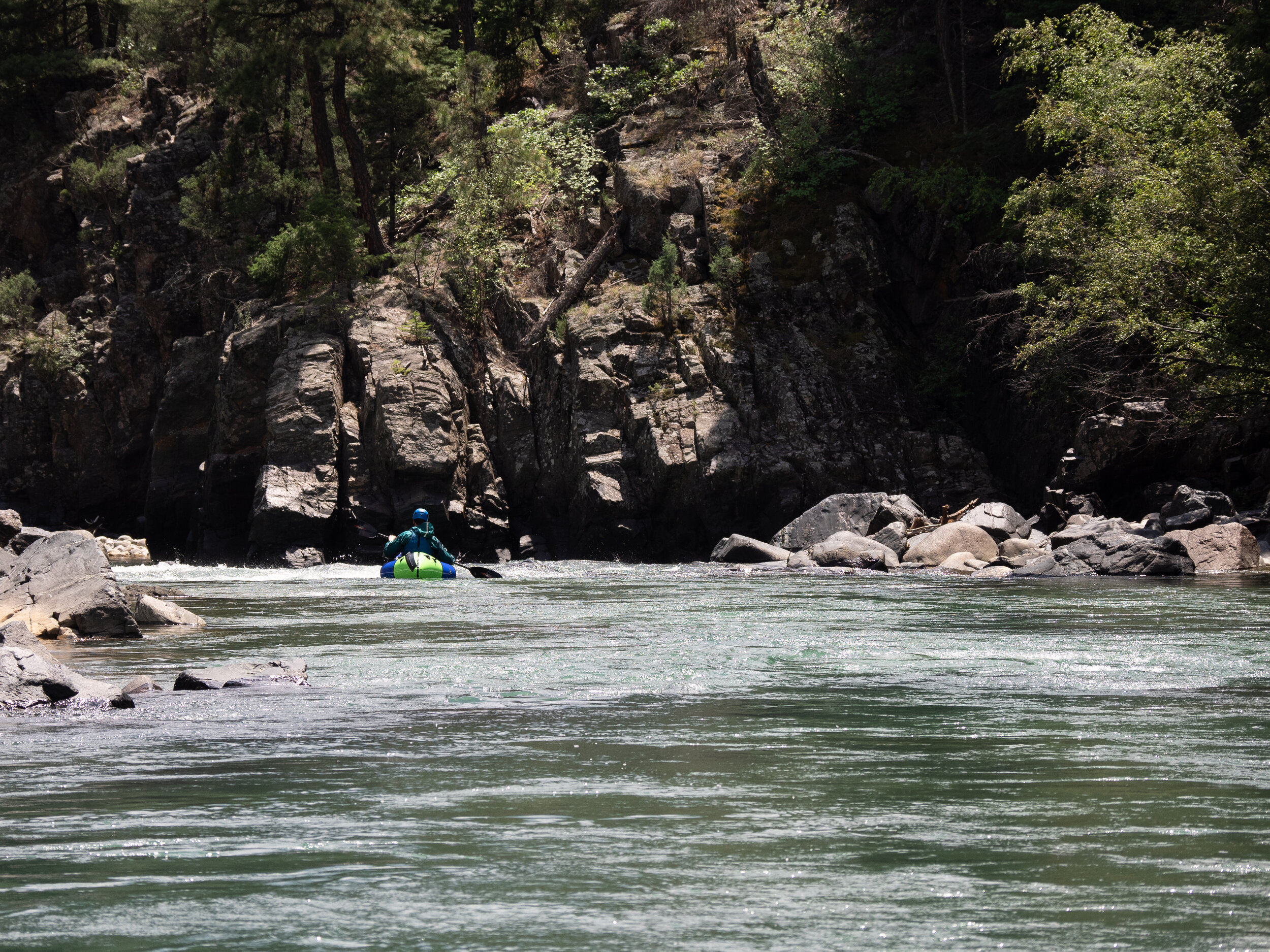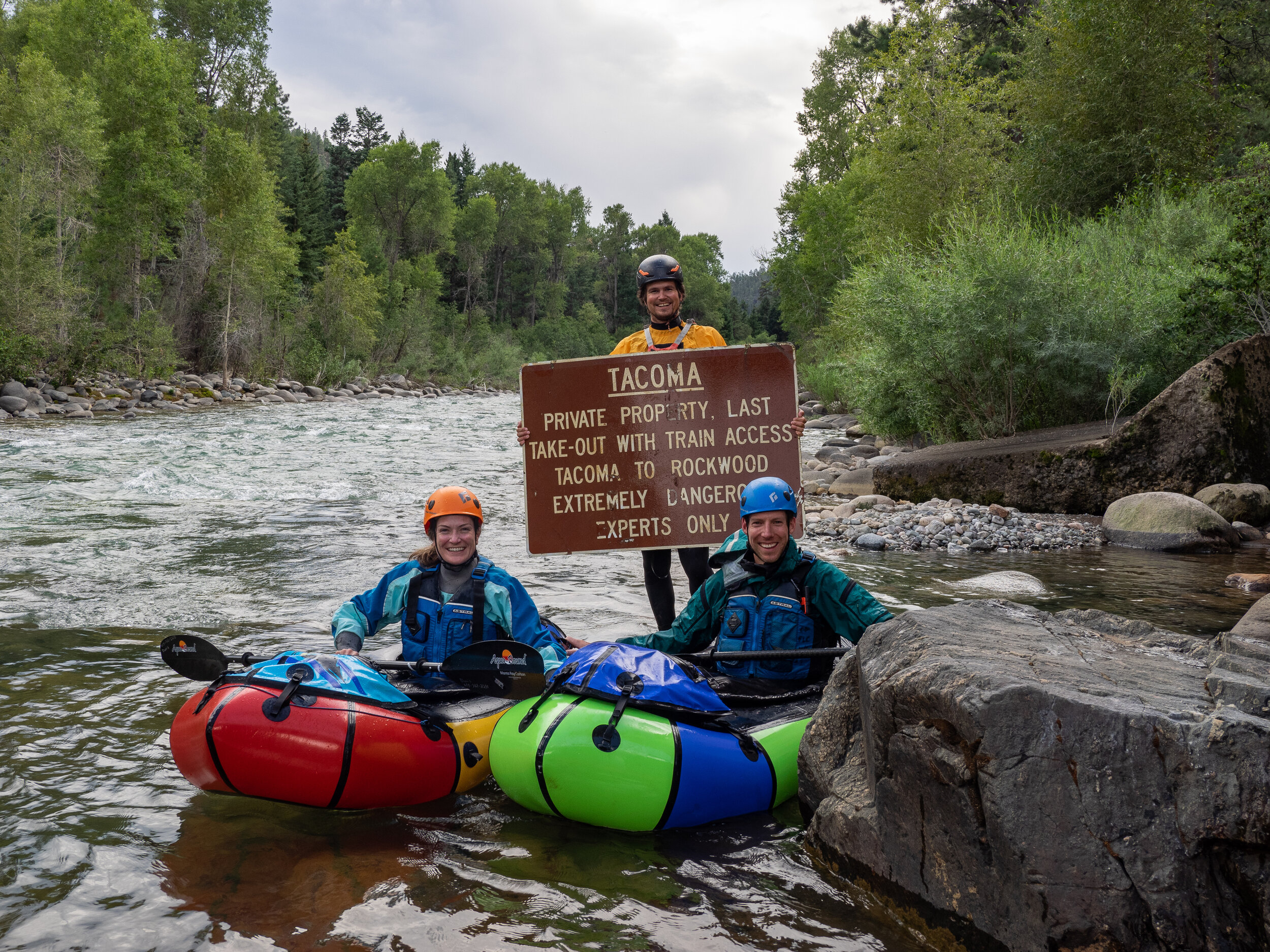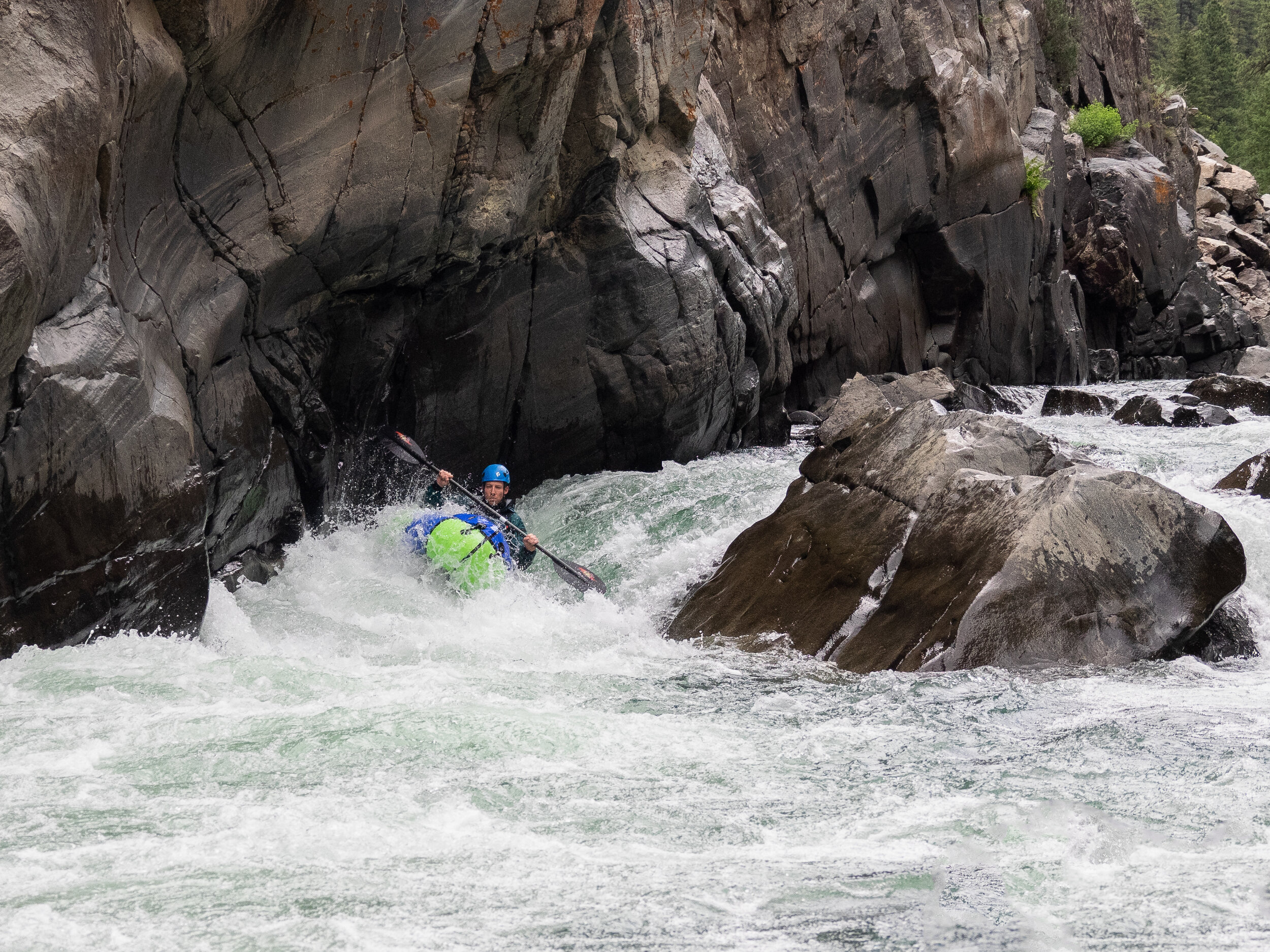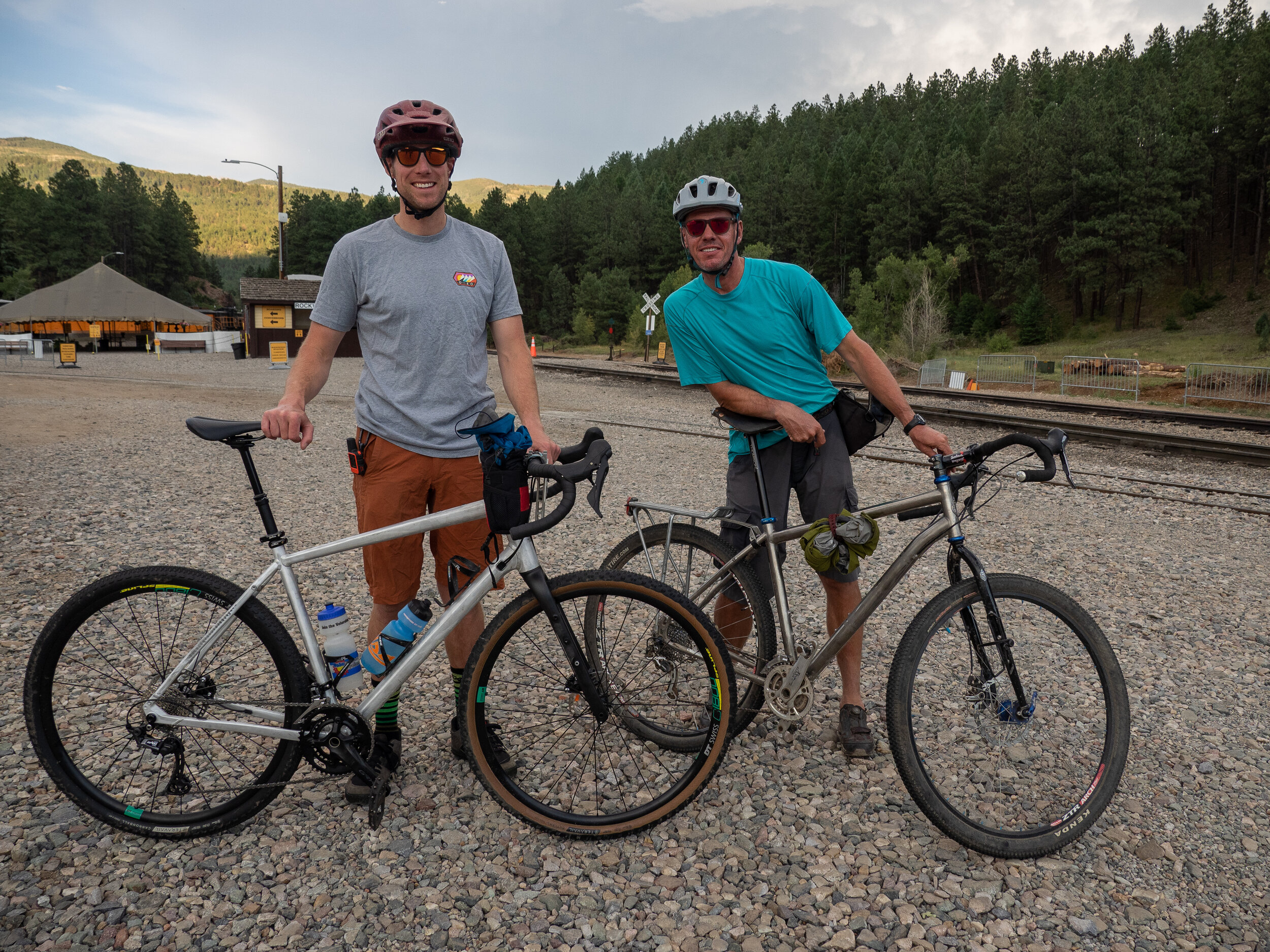The Cardinal Challenge North: An Escape
The following is part three of the Cardinal Challenge that originally appeared at Salsa Cycles. Enjoy!
Part 1: An Invitation
The drive across the “flyover states” like Nebraska can be mind-numbing. I needed some mundane, to zone out on a ribbon of asphalt for a while. I try to rejoice in suffering, since suffering produces endurance, and endurance produces character, and character produces hope. I have hope for myself to be humbled, to improve, and to help those around me. I also knew that getting out of the city and into the mountains would be good for me. Thankfully, Salsa Athlete and adventurer, Brett Davis, had called a week and half earlier with an invitation to join him on the North Route of his Cardinal Challenge.
As long as I’ve known Brett, he’s always trip planning. Some won’t happen for years. At his core, he is an engineer of adventure, constantly mulling over different ways to explore his world, big or small. With the disruption of COVID-19, all of his extended travel plans had been cancelled so he turned to his own backyard for a source of inspiration and adventure. The invited trip would be six-days in length with multiple modes of transportation—begin on bike, continue on foot, transition to pack rafts and then finish back on the bike.
I arrived in Durango on a hot July afternoon excited and tired. My wife, Lydia, had been gracious with such short notice to accept watching our two toddler girls by herself for the next week. I was so grateful.
Upon my arrival, Brett had some pre-trip business for us to take care of…to see if my former whitewater paddling skills were up to par, as he assured me that a strong paddling skill set would be needed in order to complete his planned route. I learned to whitewater kayak while in college at the University of Tennessee. The Smoky Mountains and the neighboring Cumberland Plateau are home to some of America’s premier whitewater. Though a cyclist at heart, I couldn’t help but try my hand at paddling the rivers and creeks of my backyard. Those couple years of paddling paid off. After successfully following Brett through multiple runs of Durango’s whitewater park, he deemed me ready for the challenges ahead and I felt confident in tackling the unknown.
Our journey would start the next day on twin Blackborows outfitted with Bedrock Bags. Loaded on the bikes would be a week’s worth of food, pack rafting gear (including pfds, dry tops, and paddles), and backpacking gear. I hadn’t utilized this much equipment on a single trip in years. Needless to say, the bikes and our consequent backpacks were not going to be light.
Part 2: Beasts of Burden
Twenty-twenty has given each of us a lot to think about. Pandemics, social justice, equality, wildfires, job loss, economic policy, etc. The bicycle industry has seen both record highs and record lows. I’m thankful that we are riding a wave of demand and desire for the sport and bicycles, which I hope continues. For me personally, it has meant long hours in the basement office as plans had to be adapted, products archived, and new projects taking their place. I had put in late nights the week prior to this trip and although tired, I was excited about the simplicity that a backcountry adventure affords.
After saying good-bye to Diana, we began the first leg of the route: a 30-mile bike ride to the top of Enlich Mesa. The leg began with pavement, slowly degraded to gravel, and finally, deteriorated to a rocky and rutted high mountain jeep road. The Blackborows performed as designed and carried us and our heavy loads without complaint steadily up the 5600’ foot climb.
Arriving at tree line which is nearly 12000’, I was awestruck by the views that had formed around me. The north woods of Minnesota and Wisconsin have a raw beauty that I’ve come to love, but being in mountains with massive topography and views for days can’t be beat.
At the end of our 4WD rode was the Weminuche Wilderness boundary and thus, our first transition of the route. With mechanized travel of any kind prohibited by the wilderness designation, we would have to rely on our own two legs to accomplish the next objectives of the challenge. Fourteen miles of rugged alpine terrain was between us and the famed Chicago Basin—home to four of Colorado’s 53 peaks that stand at over 14,000’. Brett’s intention was to visit the basin for the first time and then climb both Eolus (14,083’) and North Eolus (14,039’), the remaining two behemoths that he had yet to climb. Because of the presence of the Durango Silverton narrow gage railroad and the allure of four 14ers in close proximity, Chicago Basin is often overcrowded with peak baggers and other adventure types. The likely presence of so many people has kept Brett away from the zone for the entire 12 years he has lived in southwest Colorado. With the presence of COVID and the limited service of the railroad due to one of its bridges being out, the number of people accessing Chicago Basin was greatly diminished and created a prime opportunity to experience the breathtaking beauty of this part of Colorado’s largest wilderness with far less company than normal.
The transition from bikes to backpacks wasn’t easy, but after an hour or so of packing and repacking, we somehow won the game of gear Tetris and got everything into or on our packs. As I struggled to lift my beast of burden for the first time, I started to question why we were carrying all of this paddling gear. Manhandling his own pack, Brett just smiled and said that it would all be worth it. “You’ll see,” he said as he turned and started towards Mother Nature’s stone skyscrapers on the horizon ahead.
Part 3: Encounters with the Locals
After a day and a half of hiking, we arrived in Chicago Basin. The high peaks guarding the basin were imposing. I felt how small my existence is on our planet. Mother Nature always has a way of humbling the human ego and brings perspective to one’s self-importance. As I age, I realize how deeply complicated my own opinions are. I enjoy different parts of both city living and escaping to the woods. Although I wish it were the other way around, I’ve realized both play off each other and actually help me have a deeper appreciation for the other. At this point though, I was incredibly thankful to be surrounded by few people and massive peaks.
The basin wasn’t completely void of humans as scattered throughout were tents. Brett and I sought solitude on a lone ledge above the normal camping area. Just as we were settling down to watch the end of the day’s alpine glow light up the high peaks, I turned to hear the clatter of hooves on rock. We had just been joined by a few of the locals who call the San Juan Mountains home. The curious mountain goats were not shy about introducing themselves as they stared at us intently like they were waiting to be presented with some toll or gift for visiting their land. At this point, Brett said to beware of them following us whenever we needed to empty our bladders and to leave camp when doing so. The goats are continually on the hunt for salt, so what better a source than human urine?! Additional research also suggests that the goats have associated humans with increased safety from their predators (bears, wolves, and mountain lions), as these animals tend to avoid human interactions. Nonetheless, it was impressive to see close-up their strength and sure footedness. Later in the trip, we would watch from another camp as a group of goats deftly scrambled up and down narrow ledges where a single misstep could mean a fall of hundreds of feet and most likely death.
The following morning, we awoke under the stars and began our own version of scrambling in a lofty landscape. The absence of any threats from poor weather, beckoned us towards the summits of both Eolus and North Eolus. Alone on the trail, we made our way by headlamp to Twin Lakes where we left our heavy packs in a small rock outcropping. We continued on with only a small day pack carrying extra layers, water, and snacks. Moving fast and light, we made great time up to the saddle between the two peaks. From there things got interesting for me as we first tackled the northeast ridge of Eolus. Both sides of the ridge fall away into oblivion with only a couple of feet of rock separating the voids. I’ll admit that my hands were sweaty from fear, as these types of experiences are pretty much nonexistent in Minnesota. The trepidation kept me focused, serious, and respectful of the task at hand. Making one methodical and intentional move after another we were soon standing above 14,000’ and the summit block of Eolus. The views in every direction were incredible.
After the obligatory summit photo and a few minutes of relishing in our accomplishment, we began retracing our moves back to the saddle and then on to the short scramble up North Eolus. At the saddle, I had left my trekking pole wedged between a couple of rocks, as it was useless for the required hands and feet climbing on Eolus. Upon retrieving the trekking pole, I realized I had made a mistake. As with the goats, the other citizens of the alpine have an affliction for human salt. The foam trekking pole grip, as well as the wrist strap, were gnawed away by a salt deprived marmot. Dang! We hoped that our stashed packs would still be intact when we returned from the next summit.
As luck would have it, even though we had the packs wrapped up in a tarp to prevent such things, some feisty critter still made its way under my pack and decided to gorge itself on one of my shoulder straps. It was concerning at first, but after doing some magic with duct tape, I was able to recreate some semblance of a shoulder strap that lo and behold, would allow the pack to do its duty for the remainder of the trip. Lucky!
Part 4: Target Practice
The pattern of our summit days, to get up early; break down camp; hike to a lofty spot; leave packs; climb to a summit; retreat back to packs; continue on to another camp site; make camp; take nap; hydrate and eat; and then sleep, came to be the norm for the next couple of days, except for one addition. Brett’s objective of visiting Chicago Basin and climbing two of its fourteeners wasn’t his only aspirations of the trip. Since we were in the area, he had his sights on a couple of other hard to get to summits, most notable were Turret (13,835’) and Pigeon Peaks (13,972’). Both of these peaks are stunning fixtures on the horizon when driving from Durango to Purgatory ski area along highway 550. When viewed, a mountain climber cannot but help to want to stand on their summits. The problem is that they are extremely hard to get to with no well-used trail to take you to their bases. Consequently, these peaks see few summit attempts.
Thus, after fixing my chewed pack strap, we left Chicago Basin and its peak baggers for off trail scrambling over high passes and into quiet cirques. The terrain was unrelenting across steep scree and talus fields where hiking in mountaineering helmets was a must due to the rock fall hazard from above. All of the hard work paid for itself as each day we were rewarded with some of my top five most beautiful and remote camps. The best part is that we had them all to ourselves with only the native creatures of the lands as our companions. Brett’s North Route was allowing me to experience a part of Colorado that few ever do.
As a design engineer, my mind is always tinkering or trying to figure out how to improve on a design or concept. Prior to making my way to Colorado, I had fun with some scrap plywood and made Brett and I each a sling shot. With my work at Salsa as an influence, the handles of the sling shots were made with holes to allow them to be mounted to the three-bolt pattern found on most Salsa forks. When adventuring by bike, you never know when you may be in need of a sling shot.
During the first day’s bike ride, I introduced Brett to the art of sling shot use as we stopped at a local reservoir and spent some time lofting pebbles into its placid waters. We laughed like kids with each launch of our ammunition into the sky only to see the effects of our folly ripple outward across the lake. Our early afternoon camp arrivals became prime time for both naps and sling shot target practice. While lounging in the sun at nearly 12,000’, we would set up our target, Brett’s insulated hot drink mug, and begin taking shots at it. With his mug taking mortal shot after shot, we joked the afternoons away and became pretty darn good marksmen. Brett quickly became an ace, even calling a couple of his shots like Babe Ruth. I don’t believe any marmots will try to mess with his gear in the future.
Part 5: Pack Rafts for the Win!
Once Turret and Pigeon Peaks were summited it was time to exit the high country and descend to more oxygen rich air. My relationship with the pack raft and its associated gear, had changed little since I started hiking with it. It was still an unused strain on my back. Every time, I loaded my backpack, Brett assured me that it would be worth the effort of carrying the craft for 25 miles. As soon as we reached the aqua blue waters of the Animas River, the hardships of schlepping the extra gear flowed away with the current zipping by our riverside camp site. My sore feet, shoulders and hips were ready for a respite, and the pack raft and floatable waters were just the cure.
Loading all of our gear into the tubes of our pack rafts, we pushed off the banks of our final day of the trip at 9 AM with clear skies above. No longer were we hiking up or down some steep, loose slope, but rather, bobbing down a beautiful mountain stream. The Animas cuts a deep gorge through the San Juan’s and is considered one of the top whitewater runs in the country. At mid to high water levels, the river is a torrent of nonstop action with plenty of class III and IV rapids, along with a few class V drops thrown in to up the ante for all who take on its challenges. At the low water level that we were experiencing, the rapids are much more manageable with the consequences of a swim not nearly as dire.
Broken Bridge rapid was my first test, but my years of kayaking had taught me “when in doubt, paddle it out,” so I successfully followed Brett’s line through the rapid without mishap. I gained confidence with each clean run of the rapids and was soon wanting more. Brett assured me that the final three miles would more than meet my desires and act as a grand finale to an already amazing trip.
After 11 miles of paddling we pulled over at the Tacoma Power Plant to wait for Diana and friend, Graham, to join us for the final section: the Rockwood Box Canyon. A mish mash of old buildings designated the area along with the working power plant that was built in 1905-06. As I wandered among the remnants of the past, my mind traveled back to those days seeking to understand what was going on and how the world looked to the residents then. So much of what we think is permanent soon crumbles away with ever moving desires.
Before long, we were hugging Diana and Graham and floating past the power plant. A sign had once hung on the bridge above the plant warning of dangerous rapids ahead—‘expert boaters only’. On our pass by, Brett pulled over to pull the sign out of the water and take a group shot.
As we were about to enter the box canyon, the Durango Silverton train passed 200 feet above us on its abbreviated service to a zip lining operation located further upstream. Feeling as if we were in a fish bowl, the riders of the train cheered us on from above. We were suddenly the objects of the zoo.
The towering, black slate walls of the canyon quickly closed in upon us, making the water appear an even darker shade of blue green. The environment was forbidding with no way out, but down through the frenzy that I knew was ahead. Paddling up to the first horizon line, I now knew why this section of river had such a reputation. The sheer walls that rose up out of the water, made scouting each rapid from land impossible. Giant boulders combined with steep gradient, created committing rapids where one could not see what was below each horizon line. One had to have intimate knowledge of each rapid in order to successfully make it through without ruin. Brett was an excellent leader for the group, his 20 years of guide experience along with knowing the canyon intimately meant he could demonstrate the perfect line every time.
The first rapid, alarmingly named Mandatory Thrashing, set the tone for the rest of the run. Brett explained the rapid and gave us play by play directions on how it should be paddled. He then left us questioning ourselves as he ran the rapid and waited for us at the bottom. One by one, Diana, Graham and myself, would attempt to duplicate his directions and hope for the best. Dropping into Mandatory Thrashing, my stomach questioned what I was doing, but thankfully my arms and head were focused on the right canyon wall. Once in the turbulence, the river washed over me, baptizing me with its power. I emerged at the bottom of the drop right side up and psyched to have not gotten thrashed.
And so, in the same manner as the first rapid, we took on each horizon line with the exhilaration of success coursing through our bodies as we all made it safely to the takeout. Smiling from satisfaction, we hiked the final uphill to Brett and Diana’s truck where my Journeyman and Brett’s Fargo were waiting for the final leg—an 18 mile mostly downhill road ride back to where it all began. With only a water bottle, energy bar, and a rain jacket, we coasted towards town reminiscing about the past week and all that it had brought us.
The trip had done what I hoped it would, helped me get out of my world and gain some perspective – opened the windows, brought in fresh air, and pushed the walls back. The world is still a complicated place, but I have more hope than ever that I can do my part to make it better. Additionally, I couldn’t wait to see my family and dreamed of how I could plan a similar trip for them. Adventure is contagious.
Sean Mailen
Sean is doing his part to make the world a better place. As a design engineer in the bicycle industry, he envisions and creates the things that get us outside and bring us hour upon hour of joy. His wife, Lydia, and him are also raising some damn fine humans in the form of two little girls—Eden and Liv.










